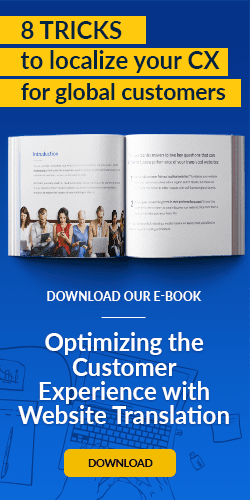As a MotionPoint customer, you understand the persuasive power of website translation. Your localized desktop website is making the right moves and dazzling the right customers.
But we live in an increasingly mobile-first world. Is your translated experience optimized to convert mobile-first global customers?
Micro-Moments 101
Today, online consumer activity happens anytime, anywhere—especially on mobile devices. Smartphone ownership continues to rise, especially in emerging and developing nations. Here’s a quick picture:
- The number of worldwide mobile phone users is expected to rise to over 5 billion by 2019.
- By 2020, nearly half of all e-commerce will in fact be m-commerce.
- Much of this mobile consumer growth is coming from large emerging economies such as Malaysia, Brazil and China.
You’ve likely heard of micro-moments, Google’s useful term for those eye-blink instances in which customers use their smartphones for specific, quick, decision-making tasks. This always-on, instant access makes customers increasingly willing to engage with brands, when that engagement is:
- Self-initiated: The moment must be of the customers’ choosing, not forced.
- Relevant: 65% of customers select the most relevant search results, regardless of source. Mobile websites must anticipate these needs.
- Swift: Consumers want to find what they want within a few minutes, especially on mobile.
This three-pronged, customer-focused strategy of micro-moments—be there, be useful, be quick—gives brands a perfect opportunity to win over mobile customers globally.
You can’t afford to ignore it, especially in global markets.
Micro-Moments for Multilingual Customers
Global customers are more than mobile-first customers—they are often mobile-exclusive customers who don’t even own a desktop computer. In fact, mobile phones are already outpacing computers in sales by four to one or more.
If you’re not prioritizing the mobile user experience in global markets as a marketing or sales channel, you’re blowing a big opportunity to engage and convert new customers.
But here’s the good news: By translating your primary-market website for secondary markets, you’re already on the path to “being there” for customers.
Localizing your mobile site and smartphone apps ensures they’re available to global customers in the moment that matters, on the device that matters.
MotionPoint can help you maximize the impact of your translated mobile content by leveraging these best practices:
Localizing Structured Data
This SEO-rich content often includes content snippets, location information and other important data that makes a big difference in your global customers’ mobile searches.
Implementing Hreflang Tags
This optimizes your translated website for discovery in regional web searches—including all-important mobile searches—and helps rank it with the same authority and relevance as your primary-market website.
Adopting an International Mobile Keyword Strategy
When global users are on the go, they often use informal terms in their mobile-based web searches. We localize your mobile content with this use case—and those terms—in mind to increase discoverability and organic traffic.
Considering Local Specificities
Different markets have different preferred search engines. Each have their own idiosyncrasies. Our rich experience with these regional search engines helps us implement the right localized SEO strategy, optimized for mobile users in your target markets.
Conclusion
Your company can increase its brand awareness, engagement and conversions in global markets—but it requires a willingness to embrace a mobile-first mindset.
MotionPoint has a wealth of experience in leveraging your existing translated content to reach your customers everywhere they are. We’ll help you leverage the mantra of micro-moments—be there, be useful, and be quick—to reach your global customers, and boost the performance of your localized online experiences.
Contact us today for more insights, and for a plan to get started.
Last updated on November 02, 2017
